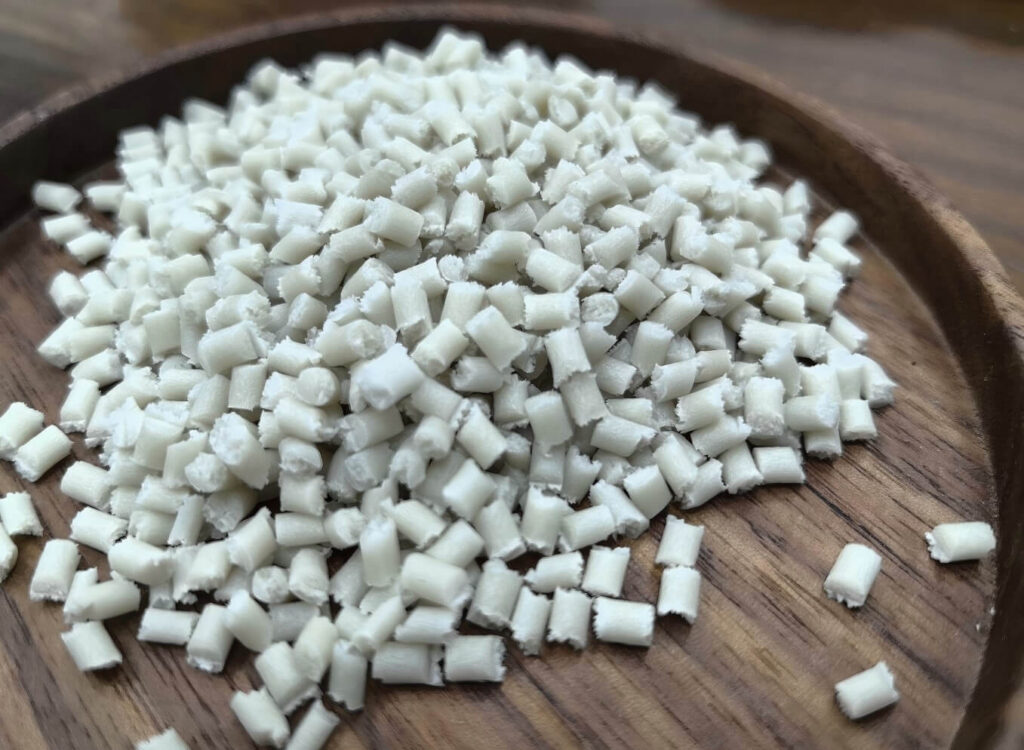Introduction
In the world of engineering plastics, nylon materials, particularly PA66, have carved out a significant niche due to their exceptional properties. When reinforced with glass fibers, such as in PA66 GF30 and PA66 GF35, these materials become even more versatile and robust. This guide dives deep into the nuances of PA66 GF30 and PA66 GF35, exploring their differences, properties, and real-world applications. Understanding these distinctions is essential for making informed decisions in various industries, from automotive to consumer goods.
Properties of PA66 GF30
A. Description of PA66
Polyamide 66, commonly referred to as Nylon 66 or PA66, is a thermoplastic polymer derived from adipic acid and hexamethylenediamine. Known for its high tensile strength, excellent thermal stability, and resistance to abrasion and chemicals, PA66 is widely used in demanding engineering applications.
B. Explanation of GF30
GF30 denotes that the material is reinforced with 30% glass fibers by weight. The incorporation of glass fibers significantly enhances the mechanical properties of the base polymer, providing improved strength, rigidity, and dimensional stability.
C. Key Properties of PA66 GF30
PA66 GF30 boasts a range of impressive properties:
Enhanced Mechanical Strength: The 30% glass fiber content significantly boosts the material’s tensile and flexural strength, making it suitable for components under mechanical stress.
High Thermal Resistance: PA66 GF30 can withstand elevated temperatures, maintaining its performance in environments where heat resistance is crucial.
Excellent Wear and Chemical Resistance: This material resists wear and tear, as well as exposure to various chemicals, ensuring longevity and reliability in harsh conditions.
Dimensional Stability: The glass fiber reinforcement minimizes shrinkage and warping, maintaining precise dimensions even under load and temperature fluctuations.
Properties of PA66 GF35
A. Description of PA66
As with PA66 GF30, PA66 GF35 is based on the same Nylon 66 polymer. However, the increased glass fiber content offers distinct advantages, particularly in applications requiring higher performance.
B. Explanation of GF35
GF35 indicates a glass fiber content of 35% by weight. This higher reinforcement level further enhances the mechanical and thermal properties of the material.
C. Key Properties of PA66 GF35
PA66 GF35 offers superior properties, including:
Exceptional Strength and Rigidity: The additional glass fibers provide even greater tensile and flexural strength, making it ideal for heavy-duty applications.
Improved Heat Resistance: With enhanced thermal stability, PA66 GF35 performs well in high-temperature environments, maintaining its structural integrity.
Outstanding Wear and Chemical Resistance: Similar to PA66 GF30, PA66 GF35 resists wear and chemical exposure, but with added durability due to the higher glass fiber content.
Superior Dimensional Stability: The increased glass fiber content ensures minimal deformation under mechanical stress and temperature changes, making it ideal for precision components.
Comparison Between PA66 GF30 and PA66 GF35
A. Differences in Composition
The primary difference between PA66 GF30 and PA66 GF35 lies in their glass fiber content—30% for GF30 and 35% for GF35. This difference in composition directly impacts their mechanical and thermal properties.
B. Variations in Mechanical Properties
Strength and Stiffness: PA66 GF35 offers higher tensile strength and stiffness compared to PA66 GF30, making it suitable for more demanding applications.
Thermal Performance: Both materials exhibit excellent heat resistance, but PA66 GF35 can endure slightly higher temperatures, making it more suitable for high-heat environments.
Durability: While both materials are highly durable, the increased glass fiber content in PA66 GF35 provides added wear resistance and longevity.
C. Applications in Different Industries
PA66 GF30: Commonly used in automotive parts such as engine covers, air intake manifolds, and electrical connectors. It’s also found in industrial machinery components and consumer electronics.
PA66 GF35: Preferred for structural applications requiring higher strength and stiffness, such as automotive structural parts, heavy machinery components, and high-performance sports equipment.
Real-World Applications and Benefits
A. Automotive Industry
In the automotive sector, both PA66 GF30 and PA66 GF35 are valued for their strength, heat resistance, and lightweight properties. PA66 GF30 is often used for under-the-hood components, while PA66 GF35 is chosen for structural parts that demand higher strength and rigidity.
B. Consumer Electronics
The stability and durability of these materials make them ideal for electronic housings, connectors, and components that require precision and reliability. PA66 GF35, with its superior properties, is particularly suited for high-end electronic devices.
C. Industrial Applications
In industrial settings, PA66 GF30 and PA66 GF35 are used for gears, bearings, and other mechanical components that operate under high stress and temperatures. The choice between the two depends on the specific mechanical and thermal requirements of the application.
D. Environmental Considerations
Both materials contribute to sustainability by extending the lifespan of products and reducing the need for frequent replacements. Their resistance to wear and chemicals minimizes maintenance and waste, supporting eco-friendly practices in various industries.
Conclusion
A. Importance of Choosing the Right Material
Selecting the appropriate material, whether PA66 GF30 or PA66 GF35, is crucial for ensuring the performance, durability, and cost-effectiveness of the final product. Understanding the specific requirements of the application helps in making an informed choice.
B. Final Thoughts on PA66 GF30 and PA66 GF35
Both PA66 GF30 and PA66 GF35 offer outstanding properties that cater to a wide range of applications. While PA66 GF30 provides a balanced mix of strength and cost-effectiveness, PA66 GF35 delivers enhanced performance for more demanding environments. By understanding their differences and benefits, engineers and designers can optimize their material selection for better product performance and longevity. Contact with Fuchen for more professional advice.
FAQs of PA66 GF30 vs PA66 GF35
A. What are the main differences between PA66-GF30 and PA66-GF35?
The main difference is the glass fiber content: 30% for GF30 and 35% for GF35. This affects their mechanical strength, stiffness, and thermal resistance.
B. How do the properties of PA66-GF30 and PA66-GF35 compare?
PA66-GF35 has higher tensile strength, stiffness, and heat resistance compared to PA66 GF30, making it more suitable for high-performance applications.
C. What are the common applications for PA66 GF30 and PA66 GF35?
PA66 GF30 is used in automotive parts, electrical connectors, and industrial components, while PA66-GF35 is preferred for structural components, high-performance automotive parts, and heavy-duty industrial equipment.

